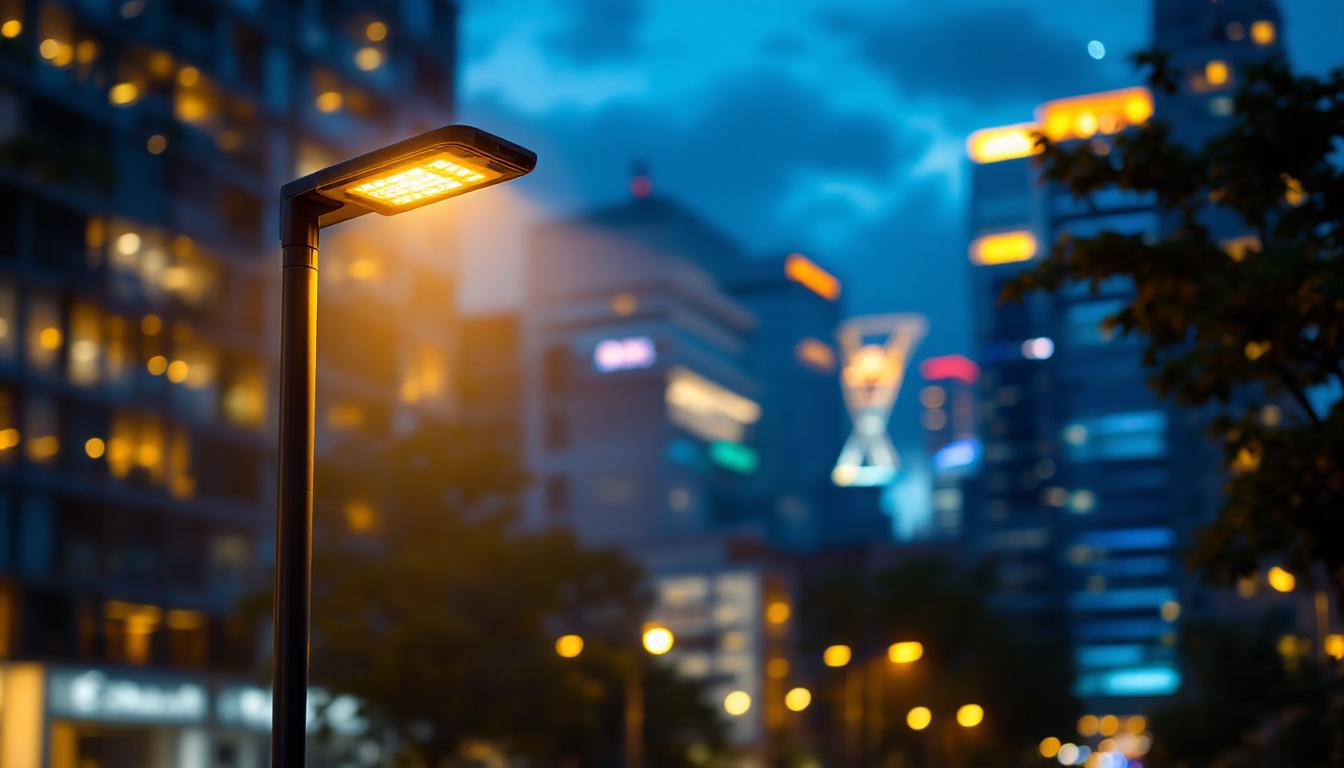
In the ever-evolving world of lighting technology, understanding the various types of lightbulbs is essential for lighting contractors. Each type of bulb has its unique characteristics, advantages, and applications. This guide aims to provide a comprehensive overview of the most common types of lightbulbs, helping contractors make informed decisions for their projects.
Incandescent bulbs have been a staple in lighting for over a century. They produce light by heating a tungsten filament until it glows. While these bulbs are known for their warm light and excellent color rendering, they are also notorious for their inefficiency. The simplicity of their design and the warm ambiance they create have made them a beloved choice in homes, restaurants, and theaters alike, where the quality of light can significantly influence the atmosphere.
One of the primary benefits of incandescent bulbs is their ability to produce a warm, inviting glow that many homeowners prefer. They are also dimmable, making them versatile for various applications, from residential to commercial settings. Additionally, these bulbs have a simple design and are readily available, making them easy to replace. The immediate brightness upon switching on is another appealing feature, as it eliminates the waiting time associated with some modern lighting technologies. Furthermore, incandescent bulbs are often favored in artistic settings, such as photography and film production, where the quality of light can enhance the visual experience.
Despite their advantages, incandescent bulbs have significant drawbacks. They convert only about 10% of the energy they consume into light, with the rest wasted as heat. This inefficiency leads to higher energy costs and a shorter lifespan compared to other lighting options. As a result, many regions are phasing out incandescent bulbs in favor of more energy-efficient alternatives. The environmental impact of their energy consumption is also a growing concern, as the demand for electricity contributes to greenhouse gas emissions. Moreover, as technology advances, consumers are increasingly aware of the long-term savings and sustainability benefits offered by LED and CFL bulbs, which can last significantly longer and use a fraction of the energy, prompting a shift in consumer preferences and lighting standards. Additionally, the transition away from incandescent lighting has sparked discussions about the importance of light quality and its effects on mood and productivity, leading to a broader exploration of how different light sources can influence our daily lives.
Compact fluorescent lamps (CFLs) are a popular choice for energy-efficient lighting. They use a gas-filled tube and a small amount of mercury to produce light, making them much more efficient than incandescent bulbs.
CFLs consume about 75% less energy than incandescent bulbs and can last up to 10 times longer. They are available in various shapes and sizes, making them suitable for a wide range of fixtures. Furthermore, CFLs emit less heat, which can contribute to lower cooling costs in warmer climates.
While CFLs offer significant energy savings, they do have some drawbacks. The presence of mercury means that proper disposal is essential to avoid environmental contamination. Additionally, CFLs can take time to warm up and reach their full brightness, which may not be ideal for all applications. Some users also report a flickering effect, which can be distracting in certain settings.
Light Emitting Diodes (LEDs) have rapidly gained popularity in recent years, thanks to their exceptional energy efficiency and longevity. Unlike incandescent and CFL bulbs, LEDs produce light through a semiconductor, which allows them to convert a higher percentage of energy into light.
LEDs are among the most energy-efficient lighting options available, consuming up to 80% less energy than incandescent bulbs. They have an impressive lifespan, often lasting 25,000 hours or more. This longevity reduces the need for frequent replacements, making them a cost-effective choice over time. Additionally, LEDs are available in a variety of colors and can be easily dimmed, offering versatility for various lighting needs.
Despite their advantages, LEDs can be more expensive upfront compared to other types of bulbs. However, the long-term savings in energy costs and replacement frequency often outweigh this initial investment. Another consideration is that some lower-quality LEDs may produce a harsh light or have poor color rendering. It is crucial for contractors to choose high-quality products to ensure customer satisfaction.
Halogen bulbs are a type of incandescent bulb that contains a small amount of halogen gas. This gas allows the filament to operate at a higher temperature, resulting in brighter light and improved efficiency.
One of the standout features of halogen bulbs is their ability to produce a bright, white light that closely resembles natural daylight. This makes them ideal for applications where color accuracy is essential, such as in art galleries or retail spaces. Halogen bulbs are also fully dimmable, providing flexibility in lighting design.
While halogen bulbs offer many benefits, they also have some disadvantages. They are still less energy-efficient than LEDs and CFLs, consuming more electricity and generating more heat. Additionally, the higher operating temperature can pose a burn risk if touched. Contractors should ensure proper installation and use appropriate fixtures to mitigate these risks.
Smart bulbs are a modern innovation that integrates lighting with technology. They can be controlled remotely via smartphones or smart home systems, allowing for enhanced convenience and customization.
Smart bulbs often come with features such as adjustable brightness, color changing capabilities, and scheduling options. This flexibility allows homeowners to tailor their lighting to suit their needs and preferences. Many smart bulbs also offer energy monitoring features, providing insights into energy usage and potential savings.
While smart bulbs offer numerous advantages, they can also present challenges. Compatibility with existing smart home systems can vary, so contractors should ensure that the products they recommend are compatible with their clients’ setups. Additionally, smart bulbs typically come at a higher price point than traditional bulbs, which may be a consideration for budget-conscious clients.
Fluorescent tube lights are commonly used in commercial and industrial settings. They consist of a long glass tube filled with gas and a phosphor coating that emits light when energized.
Fluorescent tube lights are known for their efficiency and long lifespan, making them a cost-effective choice for large spaces. They provide even illumination and are available in various lengths and color temperatures, allowing for flexibility in lighting design. Additionally, they are often used in commercial applications due to their ability to cover large areas with minimal fixtures.
Despite their advantages, fluorescent tube lights can have some drawbacks. They may flicker or hum, which can be distracting in certain environments. Additionally, like CFLs, they contain mercury, necessitating careful disposal. Contractors should also be aware that fluorescent lights may require specific ballasts, which can add to installation complexity.
High-Intensity Discharge (HID) bulbs are commonly used in outdoor and industrial lighting applications. They produce light by creating an electric arc between two electrodes in a gas-filled chamber.
HID bulbs are known for their high lumen output, making them ideal for applications requiring bright illumination, such as streetlights and parking lots. They also have a long lifespan, often lasting up to 20,000 hours. Additionally, HID bulbs are available in various types, including metal halide, high-pressure sodium, and low-pressure sodium, each offering different color temperatures and efficiencies.
While HID bulbs provide significant brightness, they also have some challenges. They require a warm-up period to reach full brightness, which can be a drawback in situations where instant light is necessary. Furthermore, HID bulbs can be less energy-efficient than newer technologies like LEDs. Contractors should assess the specific needs of each project to determine the best lighting solution.
With so many options available, selecting the right lightbulb for a project can be daunting. Several factors should be considered to ensure the best choice for both functionality and aesthetics.
The first step in choosing the right lightbulb is to assess the application. Different environments have unique lighting needs. For example, residential spaces may benefit from the warm glow of incandescent or LED bulbs, while commercial settings may require the efficiency of fluorescent or HID lighting. Understanding the specific requirements of each space will guide the selection process.
Energy efficiency is a crucial consideration for both contractors and clients. While the initial cost of some bulbs may be higher, the long-term savings in energy bills can make them a more economical choice. Contractors should educate clients about the benefits of energy-efficient options like LEDs and CFLs, helping them make informed decisions that align with their budgets and sustainability goals.
Understanding the various types of lightbulbs is essential for lighting contractors aiming to provide the best solutions for their clients. Each bulb type has its unique advantages and challenges, and the right choice will depend on the specific application, energy efficiency, and budget considerations. By staying informed about the latest lighting technologies and trends, contractors can ensure they are well-equipped to meet the diverse needs of their clients.
In a world increasingly focused on energy efficiency and sustainability, embracing modern lighting solutions can lead to significant benefits for both contractors and their clients. As the industry continues to evolve, staying updated on the latest developments in lighting technology will be key to success in this dynamic field.
Ready to elevate your lighting game? At LumenWholesale, we provide lighting contractors with the highest quality, spec-grade lighting products at prices that can’t be beaten. Say goodbye to local distributor markups and hello to our extensive selection that meets rigorous industry standards. With free shipping on bulk orders, you can trust that you’re getting premium lighting solutions at the best value — no hidden fees, no compromises. Make the smart choice for your next project and experience the best in wholesale lighting with LumenWholesale.

Discover the ultimate guide to solar panel security lights for lighting contractors.

Discover innovative strategies to future-proof your streetlight projects in this insightful guide.

Discover the essential insights every lighting contractor needs to know about fluorescent lights.

Discover why solar lanterns are becoming a game-changer for lighting contractors.